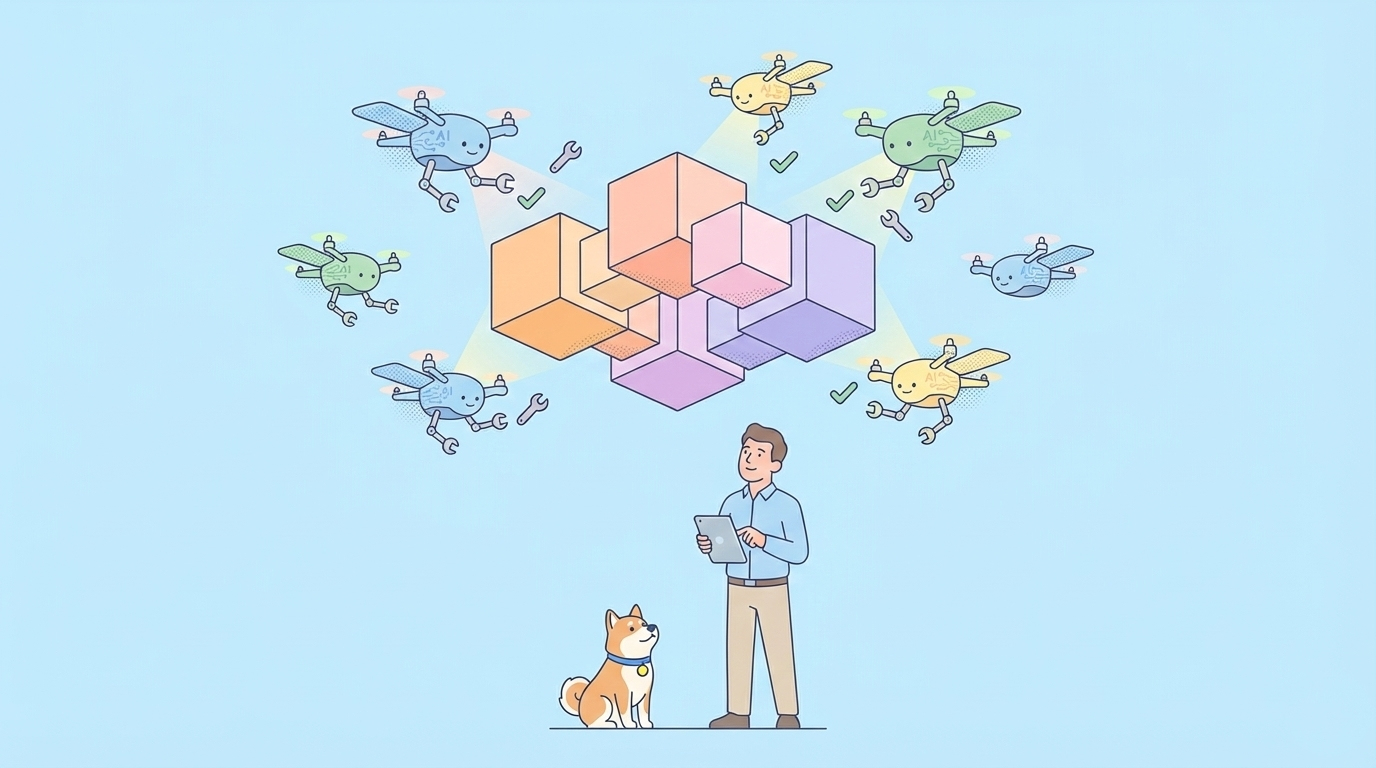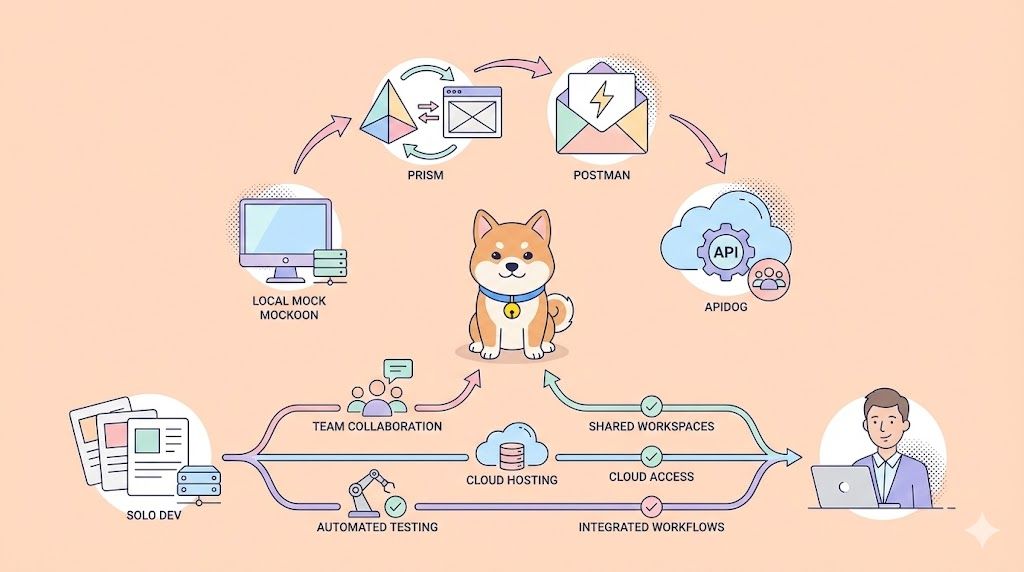Mistral AI has launched a groundbreaking model, Mistral Medium 3, setting a new standard in the AI landscape with its multimodal capabilities, cost-efficiency, and enterprise-ready features. This release marks a significant milestone for developers, businesses, and AI enthusiasts looking for high-performance AI solutions without the hefty price tag. With Mistral Medium 3, the company delivers state-of-the-art (SOTA) performance at an 8X lower cost compared to competitors, making it a top choice for coding, STEM tasks, and multimodal understanding.
In this blog post, we’ll dive deep into the technical details of Mistral Medium 3, explore its benchmark performance, analyze its enterprise-grade features, and discuss how tools like Apidog can enhance your API development process when integrating with Mistral Medium 3’s API.
What Is Mistral Medium 3? A Technical Overview
Mistral AI introduced Mistral Medium 3, as a multimodal AI model designed to balance performance, cost, and deployability. Unlike its predecessors, this model is not open-source but is tailored for enterprise use cases, offering advanced features for professional applications. Specifically, Mistral Medium 3 excels in coding, function-calling, and multimodal tasks, making it a versatile tool for industries like finance, healthcare, and energy.
The model operates at a fraction of the cost of competing models, priced at $0.40 per million input tokens and $2 per million output tokens via its API. Additionally, it can be self-hosted on just four GPUs, which significantly reduces the infrastructure overhead for businesses. This cost-efficiency, combined with its high performance, positions Mistral Medium 3 as a frontier-class model in the AI ecosystem.
Benchmark Performance: Mistral Medium 3 Outshines the Competition
Mistral AI has provided detailed benchmarks to showcase Mistral Medium 3’s capabilities across various tasks. The model was evaluated using both internal pipelines and third-party human evaluations, ensuring a comprehensive assessment of its real-world performance. Let’s break down the results.

Coding and STEM Performance
Mistral Medium 3 demonstrates exceptional performance in coding and STEM tasks, often rivaling or surpassing larger models. For instance, in the HumanEval 0-shot benchmark, Mistral Medium 3 scored 0.921, matching Claude Sonnet 3.7 and outperforming Llama 4 Maverick (0.854) and Command-A (0.829). Similarly, in the LiveCodeBench (v6) 0-shot test, Mistral Medium 3 achieved a score of 0.303, surpassing GPT-4o (0.314) and DeepSeek 3.1 (0.429) while remaining competitive.
Moreover, in the Math500 Instruct 0-shot benchmark, Mistral Medium 3 scored 0.910, outperforming GPT-4o (0.764) and Command-A (0.820). These results highlight the model’s strength in handling complex mathematical and coding tasks, making it an ideal choice for developers working on technical applications.
Instruction Following and Knowledge
When it comes to instruction following, Mistral Medium 3 continues to impress. In the ArenaHard 0-shot benchmark, it scored 0.971, surpassing Llama 4 Maverick (0.918) and GPT-4o (0.954). Additionally, in the IFEval 0-shot test, Mistral Medium 3 achieved a score of 0.894, outperforming Claude Sonnet 3.7 (0.918) and Command-A (0.887). These metrics indicate that the model can accurately follow instructions and deliver reliable outputs, a critical feature for enterprise workflows.
In knowledge-based tasks, Mistral Medium 3 holds its own. For example, in the GPQA Diamond 5-shot COT benchmark, it scored 0.571, matching DeepSeek 3.1 (0.611) and outperforming GPT-4o (0.525). Similarly, in the MMLU Pro 5-shot COT test, Mistral Medium 3 scored 0.772, surpassing GPT-4o (0.758) and Command-A (0.689).
Multimodal and Long-Context Capabilities
Mistral Medium 3 also shines in multimodal tasks, supporting text, images, and other data types. In the MMMU 0-shot benchmark, it scored 0.661, outperforming GPT-4o (0.661) and Llama 4 Maverick (0.718). Additionally, in the DocVQA 0-shot test, Mistral Medium 3 achieved a score of 0.953, surpassing Claude Sonnet 3.7 (0.843).
For long-context tasks, Mistral Medium 3 performs admirably. In the RULER 32K benchmark, it scored 0.960, matching GPT-4o (0.960) and outperforming Command-A (0.956). Similarly, in the RULER 128K test, Mistral Medium 3 achieved a score of 0.902, surpassing Llama 4 Maverick (0.867) and GPT-4o (0.889).

These benchmarks demonstrate that Mistral Medium 3 delivers top-tier performance across a wide range of tasks, often matching or exceeding the capabilities of larger, more expensive models. Next, let’s examine how its cost-efficiency sets it apart.
Cost-Efficiency: 8X Lower Cost Without Compromising Performance
One of the standout features of Mistral Medium 3 is its affordability. Priced at $0.40 per million input tokens and $2 per million output tokens, the model offers an 8X cost reduction compared to competitors like Claude Sonnet 3.7, which costs $3 per million input tokens and $15 per million output tokens. This pricing structure makes Mistral Medium 3 an attractive option for businesses looking to scale AI solutions without breaking the bank.
Furthermore, Mistral Medium 3 can be self-hosted on just four GPUs, reducing the need for expensive infrastructure. This deployability ensures that businesses can run the model in hybrid or on-premises environments, maintaining full control over their data and infrastructure. For enterprises in regulated industries, this feature is a game-changer, as it allows them to comply with strict data governance policies while leveraging cutting-edge AI technology.
Transitioning to its API availability, Mistral Medium 3 is accessible via Mistral’s La Plateforme and Amazon Sagemaker, with support coming soon to IBM WatsonX, NVIDIA NIM, Azure AI Foundry, and Google Cloud Vertex. This wide availability ensures that developers can integrate the model into their workflows with ease. Speaking of integration, let’s explore how the Mistral Medium 3 API works and how tools like Apidog can simplify the process.
Integrating Mistral Medium 3 API: Streamlining Development with Apidog
The Mistral Medium 3 API provides a seamless way for developers to integrate the model into their applications. Whether you’re building a chatbot, a coding assistant, or a multimodal application, the API offers a straightforward interface to access the model’s capabilities. However, integrating and testing APIs can be a complex task, especially when working with enterprise-grade models like Mistral Medium 3. This is where Apidog comes in.
Apidog is an all-in-one API development platform that simplifies the process of designing, testing, and documenting APIs. With Apidog, you can generate documentation directly from your API definitions, ensuring accuracy and consistency. The platform also offers integrated testing features, allowing you to verify that your API is functioning as expected before deploying it in a production environment.

For developers working with the Mistral Medium 3 API, Apidog provides several key benefits:
- Comprehensive Documentation: Apidog automatically generates user-friendly documentation from your API definitions, making it easy to share with your team or stakeholders.
- Integrated Testing: You can test the Mistral Medium 3 API directly within Apidog, ensuring that your integration is working correctly.
- Collaboration Tools: Apidog supports real-time collaboration, allowing your team to work together on API development and documentation.
- Customizable Output: Tailor the look and feel of your API documentation to match your brand, ensuring a professional presentation.
To get started, you can download Apidog for free and explore its features. By using Apidog to manage your API integration with Mistral Medium 3, you can save time, reduce errors, and ensure a smooth deployment process. Now, let’s shift our focus to Mistral Medium 3’s enterprise capabilities.
Enterprise-Ready Features: Why Mistral Medium 3 Stands Out
Mistral Medium 3 is designed with enterprises in mind, offering a range of features that make it an ideal choice for businesses. Let’s explore some of these features in detail.
Hybrid and On-Premises Deployment
Unlike many AI models that require cloud-based deployment, Mistral Medium 3 supports hybrid and on-premises deployment. This flexibility allows businesses to maintain full control over their data and infrastructure, a critical requirement for industries like finance and healthcare. By deploying Mistral Medium 3 on-premises, companies can ensure compliance with regulations like GDPR and the EU AI Act, which mandate strict data protection standards.
Custom Post-Training
Mistral Medium 3 supports custom post-training, allowing businesses to fine-tune the model for their specific use cases. For example, a financial services company could fine-tune the model to analyze market trends, while a healthcare organization could optimize it for medical diagnosis. This customization ensures that the model delivers maximum value for each enterprise’s unique needs.
Seamless Integration with Enterprise Tools
Mistral Medium 3 integrates seamlessly with enterprise tools and systems, such as Gmail, Drive, and SharePoint. Additionally, it supports the new MCP standard, making it compatible with a wide range of business applications. This integration capability ensures that businesses can incorporate Mistral Medium 3 into their existing workflows without disruption.
Le Chat Enterprise: A Corporate Chatbot Solution
Alongside Mistral Medium 3, Mistral AI launched Le Chat Enterprise, a corporate chatbot platform powered by the model. Le Chat Enterprise allows businesses to build AI agents tailored to their operations, with features like full audit logging and strict access controls to ensure data governance. The platform is available on the Google Cloud Marketplace, with support coming soon to Azure AI and AWS Bedrock.
These enterprise-ready features make Mistral Medium 3 a top choice for businesses looking to leverage AI technology while maintaining control over their data and infrastructure. Next, let’s discuss the broader implications of this release for the AI industry.
Conclusion: Mistral Medium 3 Redefines AI for Enterprises
Mistral Medium 3 is a game-changer in the AI landscape, offering SOTA performance, cost-efficiency, and enterprise-ready features. With its impressive benchmark results, affordable pricing, and support for hybrid deployment, the model is well-positioned to meet the needs of businesses across industries. Whether you’re a developer looking to integrate the Mistral Medium 3 API into your application or an enterprise seeking a scalable AI solution, this model delivers on all fronts.
To streamline your API development process, consider using Apidog, an all-in-one platform that simplifies API design, testing, and documentation. Download Apidog for free today and take your integration with Mistral Medium 3 to the next level.
As Mistral AI continues to push the boundaries of AI technology, Mistral Medium 3 stands as a testament to the company’s commitment to innovation, affordability, and enterprise readiness. Keep an eye on Mistral AI for more exciting developments in the near future.




